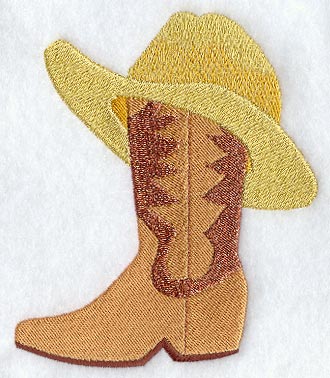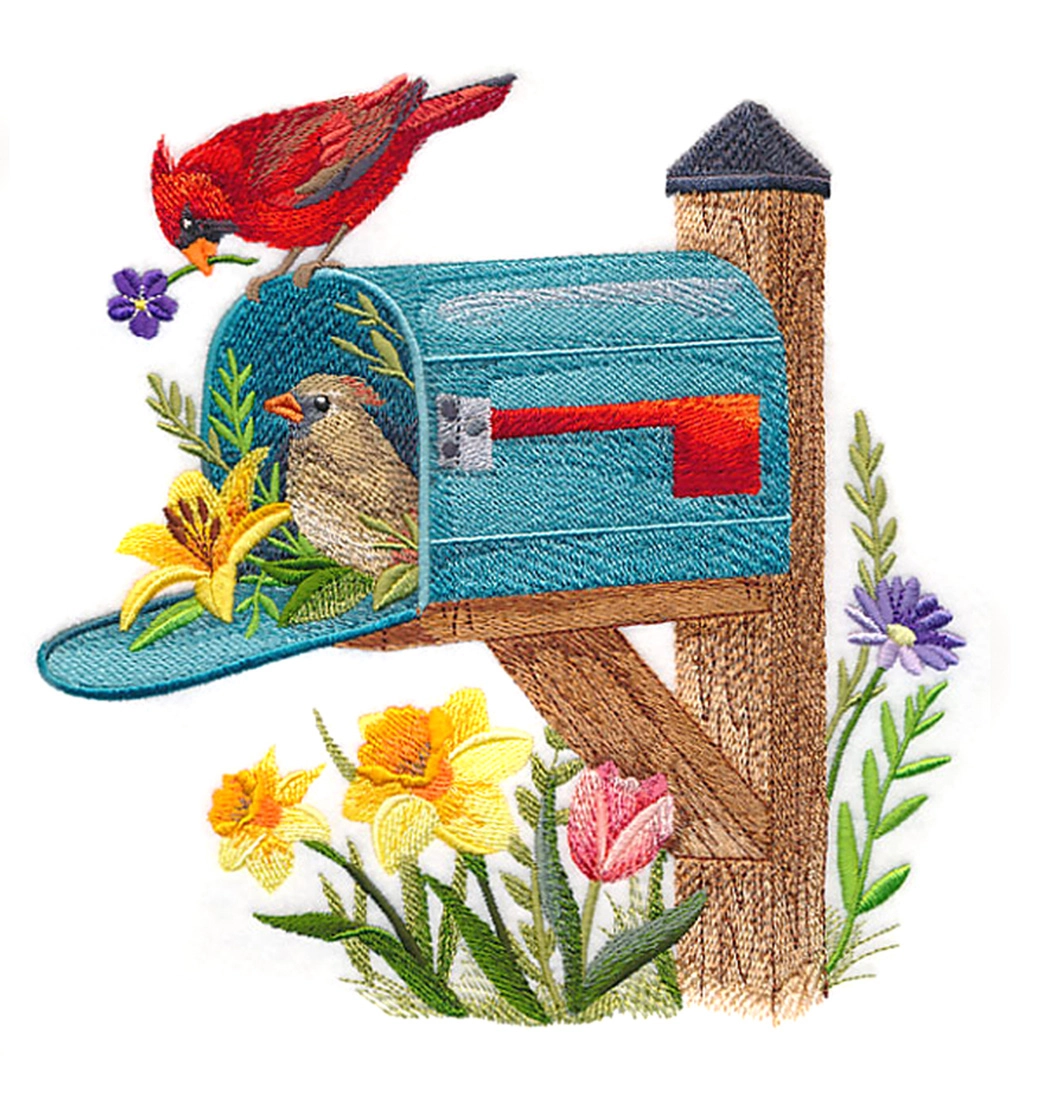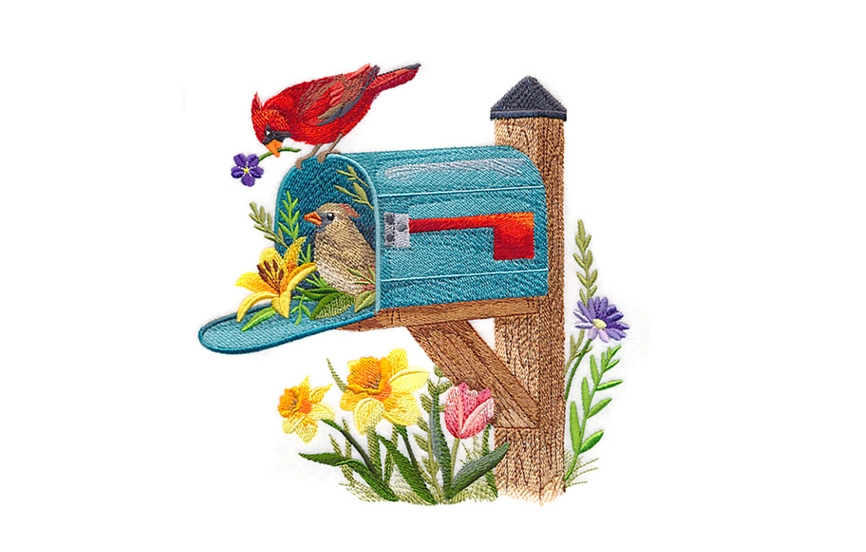Designs Used
Corduroy is a parent's best friend. It takes a licking from rough-and-tumble play, is easy to care for, and keeps little ones warm in cold weather. You can't walk through a Minnesota school from November through March without hearing the squeaky swish of corduroy rubbing together.
As well as being durable and hearty, corduroy also has a sleek sophistication that appeals to adult. Corduroy is found in suits for men and women, pants, jackets -- even vests!
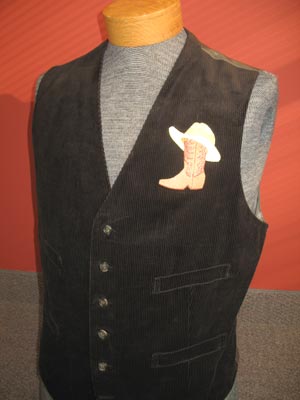
Corduroy was first produced in Manchester, England during the early 19th century. Manchester was a textile hub in the 1800s. A high number of cotton mills in that area gave the town its nickname of "Cottonopolis."
Thought of as the "poor man's velvet," corduroy was worn primarily by mill workers, laborers, and those of lesser means. But by the 20th century, children's clothing and school uniforms were being made from corduroy too specifically because of its sturdy quality.
After being used for soldiers uniforms in World War I, corduroy continued to find its way into wardrobes and homes. Today, corduroy is also used for a large variety of items including dresses, pants, jackets, bedspreads, draperies, and upholstery, to name a few.
Corduroy has made its way into pop culture as well. I grew up reading the children's story about Corduroy, a stuffed bear, who lives in an department store. He wears a pair of green corduroy overalls.
The fabric has a steadily growing fan-base as witnessed by the creation of the Corduroy Appreciation Club. Their mission statement reads that they are, "a social club which wishes to cultivate good fellowship by the advancement of Corduroy awareness, understanding, celebration, and commemoration of the fabric and all related items."
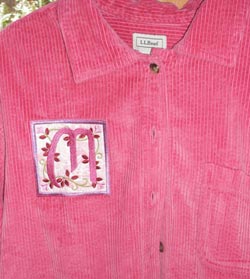
What makes corduroy so unique from other fabrics is its ridged surface. Called 'wales,' the raised lines are soft nap or cords made from cotton, rayon, and other textile fibers. The grooves that have been cut out of the fabric are called 'channels.' The fewer wales a type of corduroy fabric has, the wider the wale. Small and narrow ridges are referred to as "pinwheel corduroy," while "wide-wale corduroy" is the name given to fabric with, well, wide wales!
Besides making the textile strong and warm, the distinctive texture of corduroy also makes it soft - the closer the wales, the softer the fabric. It is also able to absorb and release moisture quickly, and in turn lets the corduroy breathe.
One downside to corduroy is the flattening of the wales that naturally occurs with wear. Garments often will show "shiny" spots on the elbows, knees, and seat areas where the most wear tends to happen. Unfortunately, the effect usually can't be corrected.
When embroidering on corduroy, the size of the wale that will determine what type of design you will want to use. Pinwale corduroy will handle any type of design, but it will drape better with a light and airy design. Redwork or vintage-stitch designs are good choices.
For deeply-ribbed, wide-wale fabric, it is necessary to choose a solid-fill design. The complex stitches will prevent the design from sinking into the channels of the corduroy.
Your choice of stabilizers will also depend on the wales of your corduroy. Different weights and wales will require different stabilizers, and in some cases, I would recommend pairing up two types of stabilizer. I will further explain which types to use or pair together as you read on.
I stitched all of the examples below with a 75/11 sharp sewing needle, which will efficiently push aside the threads and pile without cutting them. A denim needle will also work nicely for heavier weight corduroy.
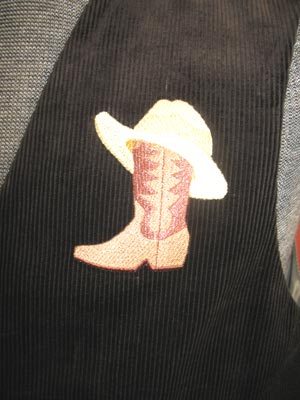
When embroidering on wide wale or deeply-ribbed corduroy, hoop the fabric with medium weight cutaway stabilizer that has been sprayed with a bit of temporary adhesive. Smooth the fabric on top of the stabilizer and then hoop them together.
Next, hoop or lay a piece of lightweight water-soluble stabilizer, like Sulky Solvy, on top of the fabric. This will prevent the stitches of the design from sinking down into the corduroy.
For very deeply-ribbed corduroy, you may want to use a heavyweight water-soluble stabilizer to prevent the stitches from sinking into the deep channels. I use Sulky Ultra Solvy stabilizer as a topping and get excellent results.
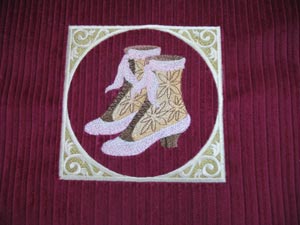
Although the wales on this corduroy are wide and large, the channels are not deep. I followed the same steps as mentioned above, but this time used a lightweight, water-soluble stabilizer on top of the fabric when stitching out the Victorian Boots and Bow with Frame design. The detail on the solid-filled design stitched out crisply and did not sink into the fabric.
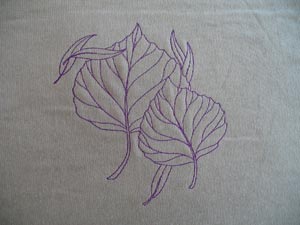
When embroidering on narrow wale corduroy, hoop the fabric with medium weight cutaway stabilizer that has been lightly sprayed with a temporary adhesive. There is no need to add a water-soluble stabilizer on top of this type of corduroy as the Aspen Leaves (Redwork) design is so light and the wales of the fabric are so close together.
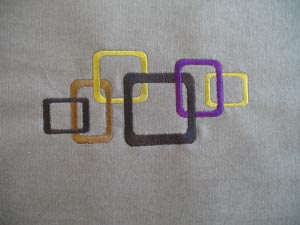
Any design will work well on narrow wale, low pile corduroy, but it is best to consider light and airy designs to allow for better draping.
The geometric square design is a good choice, as it has plenty of open space within it
Not all corduroy is the same, so it is always important to follow the recommended care instructions on each item. For instance, some 100 percent cotton corduroys may wrinkle badly and shrink if they are dry cleaned. Most corduroys are made from either 100 percent cotton (or a close percentage) and can be machine washed. However, I would recommend using caution when washing dark-colored corduroy like deep reds, blues, and blacks - color bleeding is quite common.
For removing stains, only blot the fabric with a wet cloth. Harsh brushing or rubbing of the wales will compromise the look and texture of the corduroy.
If the label permits ironing, always iron the corduroy on the reverse side. The iron can be set at a high temperature, but make sure to use a light touch - pressing too hard will flatten the wales. Avoid ironing over seams, hems and pocket edges; the iron may leave permanent marks.
